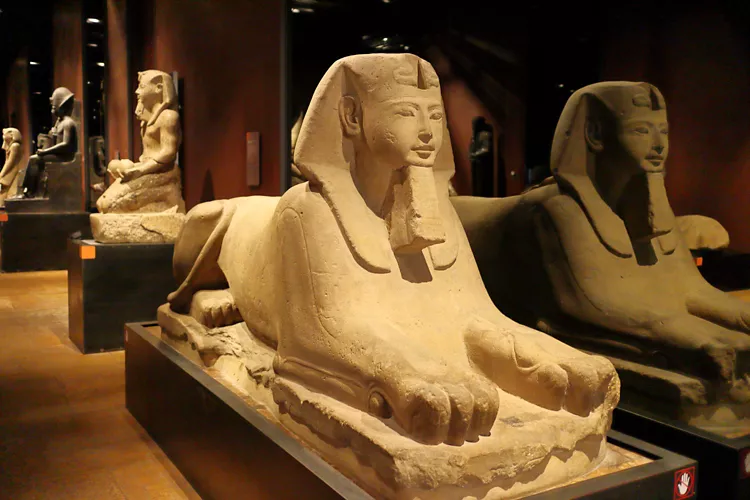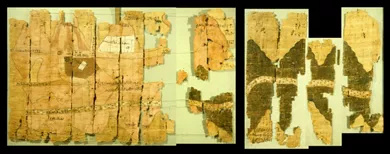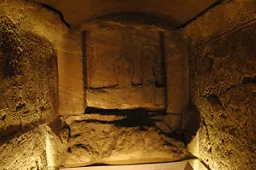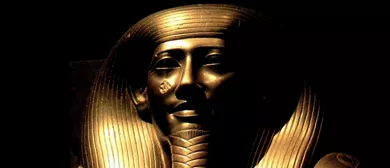This content was automatically translated. View the original text.




Overview
Egyptian Museum a Journey into Ancient Egypt
"The road to Menfi and Thebes passes through Turin." (Jean-François Champollion)
It is the oldest museum in the world dedicated to Ancient Egyptian culture. It houses more than 40,000 finds including ancient plaques, mummies, papyrus, objects, stuffed animals, statues and sphinxes that make this venue the sixth most visited place in Italy. The Museum offers the opportunity to join thematic visits, admire temporary exhibitions and take part in educational tours and workshops to explore the knowledge preserved here. Several exhibition spaces and tour itineraries with a broad offering in terms of knowledge and experience. Visitors absolutely must see the Silvia Curto Library with its interesting ancient works and collections of immense value.
At the Egyptian Museum in Turin: with the tablet
Tablets, interactive tables and clever lighting effects for total immersion in the courts of the pharaohs. The Egyptian Museum in Turin, second only to the Egyptian Museum in Cairo, underwent an impressive renovation in 2015, with the collaboration of the famous Oscar-winning set designer Dante Ferretti. And today it allows a plunge into ancient Egyptian culture, brought to life by multimedia.
An Oscar-winning set design
Dante Ferretti is a star of the Italian firmament that shines on the international stage. A set and costume designer, he has won three Oscars, including one for Martin Scorsese's film The Aviator, and other prestigious awards. His talented visionary touch is also at the Egyptian Museum in Turin.
As part of the complete renovation of the museum in 2015, he was asked to take care of the lighting and some of the installations. Not to be missed is the one entitled The Great Nile, which reproduces the course of the legendary river all the way to its estuary, created with gelatin and fibreglass as a giant jigsaw puzzle of fabric panels. It will be spectacular to admire it as you make a 24-metre leap through an escalator system, above a Mesopotamia recreated today in a very modern style.
Immerse yourself in the play of light and mirrors
Semore by Ferretti the lighting of the Statuary, one of the most spectacular rooms of the Egyptian Museum, all based on LED technology with a high level of environmental sustainability.
It is a highly evocative space, with Pompeian red walls, where the individual statues are illuminated both from above and below, multiplied by a play of mirrors that allow you to observe the masterpieces in their three-dimensionality. You will feel as if you are standing next to the pharaohs, you, in the first person.
Thanks to studied lighting technology and special shaping projectors, you can admire every single detail of Ramesses II, the most famous pharaoh, and the Sphinx of the New Kingdom; of King Amenhotep II and Sekhmet, the lion-headed goddess, and the bovine-horned goddess Hathor. Linger over the shades of pink granite of the statue of Ramesses with the god Amun and the goddess Mut. Let yourself be enchanted by the hieroglyphics engraved on the sarcophagus of Gemenefherbak and the inscriptions on the stone.
Why Turin?
In the early 19th century, in the wake of Napoleon's campaigns in Egypt, the fashion for collecting antiquities from that country spread throughout Europe. Bernardino Drovetti, consul general of France during the occupation, boasted a collection of 8,000 pieces and later King Charles Felix also acquired countless pieces: from the union of these two collections, the museum in its embryonic state was born.
Exponents of the House of Savoy, over decades of expeditions, continued to enrich the collection and consequently the museum. Turin thus became a great centre for the study of Egyptian culture.
A truly pharaonic route
More than 2 km of exhibition space on four floors, 8,000 findings covering a span of history from 4000 BC to 700 AD: these are the record numbers of the largest Egyptian Museum, second only to Cairo in terms of the quantity and importance of its collections, and the oldest in the world entirely dedicated to Egyptian culture. Funerary furnishings, statues, sarcophagi, jewellery and papyri are on display. The itinerary is well-maintained and you do not run the risk of getting lost.
If you prefer, you can choose a tour entirely guided by experts or opt for the multimedia audio guide on your smartphone, framing the QR.codes in the rooms. The rooms are dotted with tablets and interactive tables: have fun exploring the aspects that interest you most. Don't miss the 3D videos, which will make you experience the thrill of feeling like an archaeologist for a day. Through sequences showing excavation documents and period photographs, you will find yourself inside the tomb of Kha and that of Nefertari, then inside the Chapel of Maia.
Two accompanying experiences
One of the experiences to enjoy, especially if you have children in tow, is the thematic guided tour entitled Life in the Afterlife. The ancient Egyptians devoted a great deal of time to preparing for their future after death, which was considered to be the transition to a subsequent existence just as glorious as their earthly one. An Egyptologist tells you about these sophisticated practices, from the production of sarcophagi to the preparation of the body, which had to remain intact, to the mysterious symbolism of the funerary papyri. Art lovers are advised to visit the Restoration Area, on the second floor, where they can watch live restorations of artefacts in the Museum.